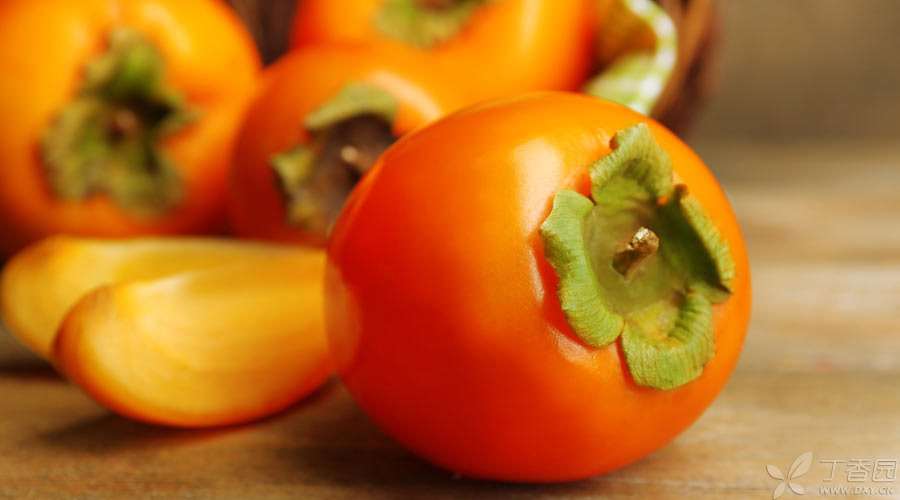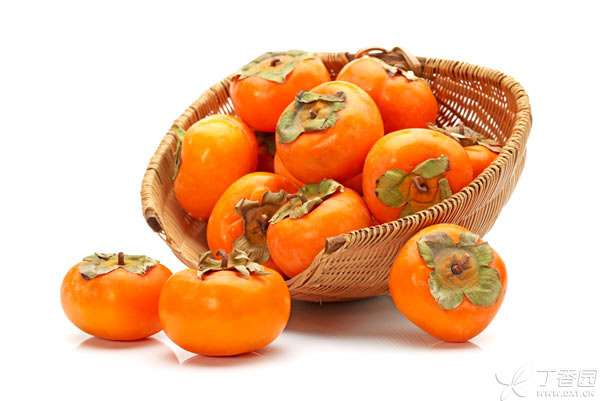
Just after first frost, it can be said that it is the best time to eat persimmons. However, on the Internet, there are many taboos about eating persimmons in the circle of friends, and even there are rumors that [a little girl died of poisoning when eating persimmon yogurt together].
For the time being, let’s not delve into the truth or falsehood of this rumor. Let’s talk about whether the long-standing taboos related to persimmons are true or false. How should I eat sweet and attractive persimmons?
Tannic acid is at work
Only when there are holes can there be wind. The taboos about persimmons all come from their rich [tannic acid].
Tannic acid, also known as tannin, tannin (tannin), It is a polyphenol substance. Under certain conditions, it can combine with protein to form a precipitate with large molecules and insoluble in water-[tannic acid protein]. When there is more gastric acid in the stomach, tannic acid protein and pectin and cellulose in food, etc., bond persimmon skin and persimmon core together, and rapidly form stomach stone in the stomach, also known as [stomach persimmon stone].
This [gastric persimmon stone] produces mechanical injury to gastric mucosa, compressing gastric wall, blocking pylorus, and further stimulating gastric acid secretion. Therefore, patients with acute and chronic gastrolithiasis often have symptoms such as upper abdominal pain, abdominal distension, nausea, vomiting, black stool, etc., and even erosive gastritis and gastric ulcer. In serious cases, surgery is required to remove gastrolithiasis.
The popular persimmons cannot be eaten with yogurt, crabs and eggs because these foods are rich in protein. Tannic acid in persimmons may combine with some proteins in these foods, causing stomach discomfort and affecting digestion and absorption of proteins.
However, persimmons cannot be eaten together with sweet potatoes, hawthorn and black dates because these fruits are rich in tannic acid, pectin and cellulose. Cellulose in these foods is easy to combine with tannic acid protein, and eating more easily causes flatulence, which may aggravate the indigestion feeling after eating persimmons.
The content of tannic acid varied greatly
See here, perhaps many people will lament [do you want to stay at a respectful distance from persimmon, a delicious fruit? ]
Of course not. The premise of these discomforts is [eating in large quantities] and [persimmons contain high tannic acid]. In fact, the tannic acid content in different persimmons is different, generally between 0.4% and 4%, with a difference of up to ten times.
Generally speaking, persimmons can be divided into astringent type and sweet type. Sweet persimmons can naturally deastringent in trees before ripening, while astringent persimmons need to be ripe and picked, and after artificial deastringent, excessive tannic acid will be removed, which is suitable for sale and eating. Most persimmons in the market are deastringent and have low tannic acid content.
However, when persimmons are not ripe, tannic acid content is relatively high, especially in the outer cortex of pulp-that is, near the persimmon skin, tannic acid is more distributed.
Judging whether persimmon tannin content is high or not, the simplest method can be used-tongue. Simply put, the more astringent it tastes, the higher the tannin content. Refer to < < Dietary Guidelines for Chinese Residents > > It is recommended to eat 200-400g of fruits every day. Usually, eat 1 or 2 mature persimmons of medium size (about 150-200g/piece), which are not sour or astringent, and generally do not cause adverse reactions.

Can persimmons be eaten on an empty stomach?
In addition to tannic acid, more gastric acid secretion and weak gastrointestinal function are also the causes of possible discomfort after eating persimmons.
When people are on an empty stomach, the acidity in their stomachs is usually high, and they may feel uncomfortable if they only eat a small amount of persimmons. This is why stomach persimmon stone cases are more common in a decade or two years ago: at that time, food was insufficient, and some people picked 2 or 3 persimmons from trees to eat them in order to appease their hunger. It is more dangerous if they meet with those who do not remove astringency.
Diabetics, eat persimmons in an appropriate amount.
Persimmon’s blood sugar index is 37, which is not high, but its sugar content is relatively high, approaching 20%, mostly simple disaccharides and monosaccharides. Moreover, mature persimmons are soft and rotten, and their chewiness is not strong, so persimmons have a higher reaction to raise blood sugar.
Persimmon is not an absolute taboo for non-serious diabetics. You can eat less and try it a little. Or after eating persimmons, eat less staple food in an appropriate amount.
Tips for Smart Persimmon Eating
-
Eat a proper amount, not more than 1 ~ 2 medium-sized persimmons a day;
-
Don’t eat persimmons that have not been removed from astringency at will, such as persimmons grown by roadside or so-called home.
-
Don’t eat immature persimmons;
-
For people with weak gastrointestinal function, try not to eat astringent persimmons.
-
If you feel strong discomfort after eating persimmons, you should see a doctor in time.
Responsible Editor: Fu Ting
Copyright of Clove Garden. No reprinting is allowed without permission.
Source: Shutterstock.com
